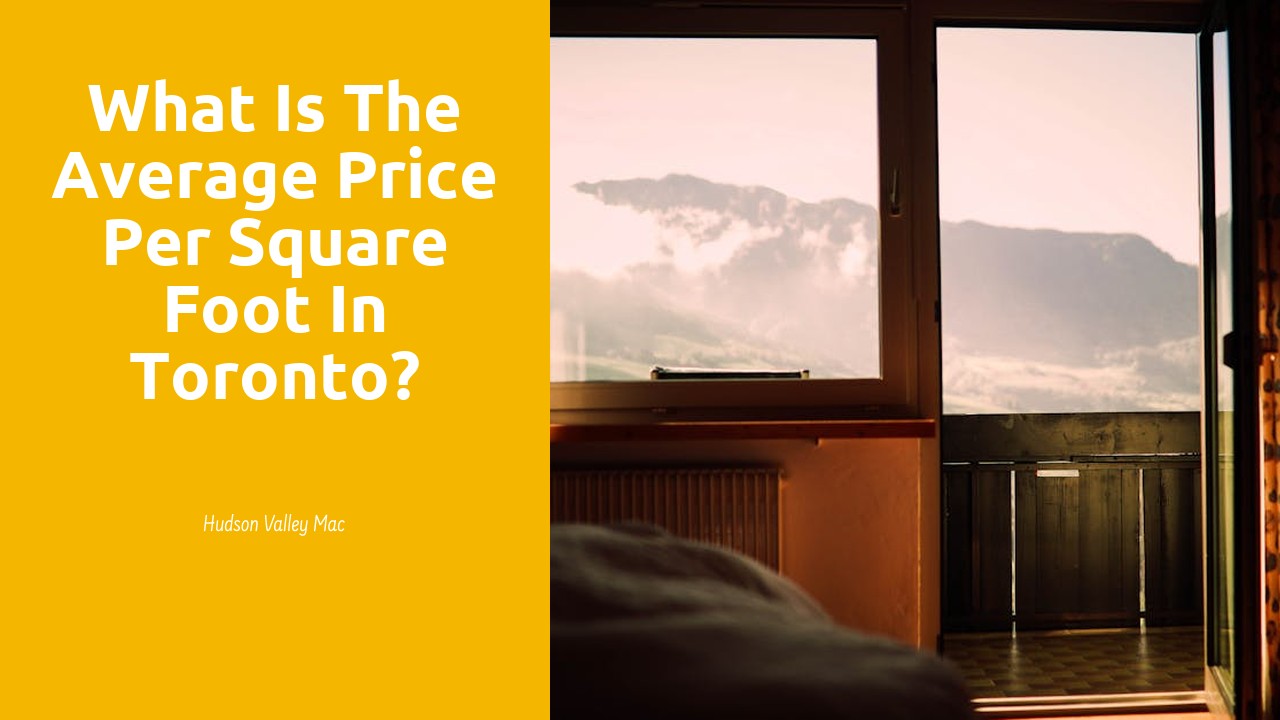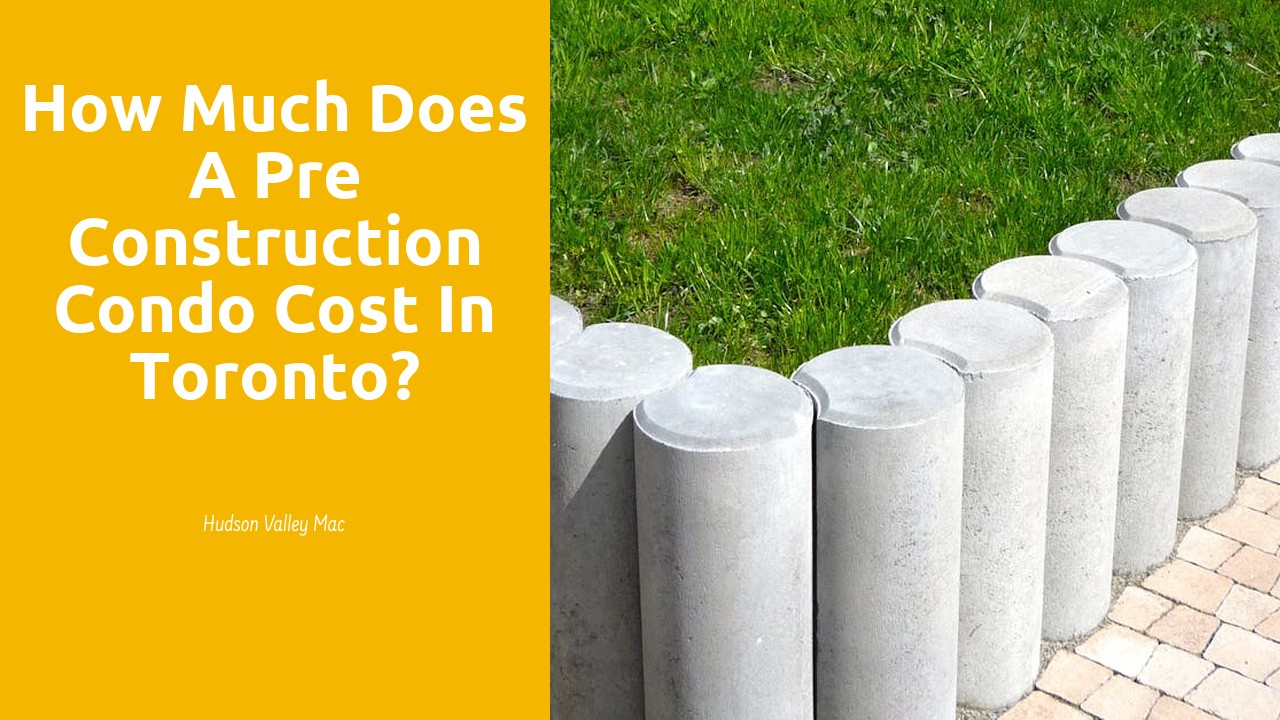
Table Of Contents
Comparing Toronto Real Estate Prices to National Averages
When comparing Toronto real estate prices to national averages, it becomes evident that the market in this bustling city tends to stand out on its own. Toronto's real estate sector portrays a unique blend of factors that influence property valuation. With skyrocketing demand and limited supply, the average price per square foot in Toronto consistently surpasses the national averages, often setting new benchmarks in the Canadian real estate landscape.
In the midst of this real estate phenomenon lies the intriguing concept of Design Concept Development in Bowmanville, a community that showcases innovative approaches to property valuation and development strategies. The juxtaposition of Toronto's high-demand market with the emerging trends in areas like Bowmanville highlights the diverse nature of real estate pricing across different regions in Canada. This contrast prompts investors and homeowners alike to delve deeper into the intricacies of the ever-evolving real estate market to capitalize on the opportunities presented.
Regional differences in property valuation
Belleville, located in the province of Ontario, offers a unique landscape for property valuation when compared to the bustling real estate market of Toronto. The average price per square foot in Belleville stands at a more moderate level than the Toronto market, presenting a favourable opportunity for potential buyers or investors seeking properties at a lower cost. Design Concept Development in Belleville tends to focus on residential spaces that cater to a more relaxed and suburban lifestyle, which contrasts with the high-rise condominiums and luxury townhouses dominating Toronto's urban real estate scene.
Despite the disparity in average property prices, Belleville's real estate market showcases its own set of characteristics that influence property valuation. Factors such as proximity to amenities, the quality of schools, and overall community development play a significant role in determining property values in Belleville. This creates a distinct property valuation landscape that differs from Toronto's, offering a diverse range of options for individuals looking to invest in real estate outside of the bustling city dynamics.
Tips for Investing in Toronto Real Estate
When considering investing in Toronto real estate, it is vital to conduct thorough research on the current market trends and property values. Understanding the specific neighborhoods and their potential for growth can contribute significantly to making informed investment decisions. Additionally, seeking guidance from local real estate professionals who have a deep understanding of the Toronto market can provide valuable insights into potential opportunities for growth and profitability. For instance, considering Design Concept Development in Bowmanville could be a strategic move to capitalize on the up-and-coming property values in that area.
Moreover, diversifying your real estate portfolio in Toronto can be a wise strategy to mitigate risks and maximize returns. Investing in a mix of residential, commercial, and rental properties can help spread out potential vulnerabilities in the market. It is also important to stay updated on any changes in government policies or regulations that may impact the real estate market in Toronto. Being proactive and adaptable to market fluctuations is key to maintaining a successful real estate investment strategy in Toronto.
Strategies to maximize ROI in the current market
To maximize return on investment (ROI) in the current Toronto real estate market, staying abreast of market trends is essential. Conducting thorough research on neighbourhoods showing growth potential and identifying emerging markets can provide investors with an edge. Engaging with local real estate professionals to gain market insights and access to off-market deals can prove advantageous. Additionally, considering factors such as job growth, infrastructure developments, and proximity to amenities can assist in selecting properties with high ROI potential.
Moreover, investors should prioritize property improvements that yield maximum returns. Renovations that enhance curb appeal, modernize interiors, and improve energy efficiency can increase a property's value significantly. Conducting a cost-benefit analysis before undertaking renovations is crucial in ensuring the expenses align with the potential ROI. For instance, implementing sustainable design concepts in property renovations, such as energy-efficient fixtures and eco-friendly materials, can attract environmentally conscious tenants or buyers. Exploring partnerships with local organizations or professionals specializing in sustainable design concepts can offer unique opportunities for Design Concept Development in Sault Ste Marie.
Understanding Property Valuation Methods in Toronto
When it comes to understanding property valuation methods in Toronto, one crucial aspect is the assessment of comparable properties in the vicinity. This method involves looking at similar properties that have recently been sold in the same neighbourhood to gauge the current market value of a property. By analyzing factors such as size, location, age, and specific features, real estate professionals can estimate the value of a property using this comparative approach. Additionally, considering the Design Concept Development in Caledon may influence property valuation in Toronto, as unique design elements and architectural features can impact the overall value of a property.
Another important property valuation method in Toronto is the cost approach, which involves calculating the cost of rebuilding a property from scratch. This method takes into account the current market value of the land, plus the cost of construction, minus any depreciation. By assessing the physical condition of the property, its age, and any necessary upgrades or repairs, appraisers can determine the replacement cost of the property. When incorporating the Design Concept Development in Caledon into the valuation process, elements like high-quality materials, innovative design, and sustainable features can contribute positively to the property's overall value.
Appraisal techniques and valuation models
When it comes to appraisal techniques and valuation models in Toronto, various methods are employed to determine the price per square foot of real estate in the area. One commonly used approach is the sales comparison method, where the value is estimated by comparing the subject property to similar properties that have recently sold in the market. This method takes into account factors such as location, size, condition, and amenities to come up with a fair valuation.
Another important aspect of property valuation in Toronto is the income approach, which is commonly used for commercial properties. This method evaluates the property's potential rental income to determine its value. By considering factors such as rental rates, occupancy levels, and operating expenses, investors can gauge the income-generating potential of a property in Toronto. Understanding these valuation methods is crucial for investors looking to maximize their ROI in the competitive Toronto real estate market, especially with the growing interest in Design Concept Development in Halton Region.
FAQS
What is the average price per square foot in Toronto?
The average price per square foot in Toronto varies depending on the neighborhood, type of property, and market conditions. As of [current year], the average price per square foot for condos in Toronto is around [average price] while for detached homes it is [average price].
How does the average price per square foot in Toronto compare to national averages?
The average price per square foot in Toronto is generally higher than the national average due to high demand, limited supply, and the city's status as a major economic hub. This makes Toronto real estate a lucrative but competitive market for investors and homebuyers.
Are there regional differences in property valuation within Toronto?
Yes, there are significant regional differences in property valuation within Toronto. Neighborhoods closer to the downtown core or with good transit access tend to have higher property values per square foot compared to suburban or less centrally located areas.
What are some tips for investing in Toronto real estate?
Some tips for investing in Toronto real estate include conducting thorough research on market trends, working with a knowledgeable real estate agent, considering long-term growth potential, and being prepared to act quickly in a competitive market.
How can investors maximize their ROI in the current Toronto real estate market?
Investors can maximize their ROI in the current Toronto real estate market by focusing on properties with strong rental potential, considering value-add opportunities such as renovations, diversifying their portfolio across different property types, and staying informed about market changes and regulations.






